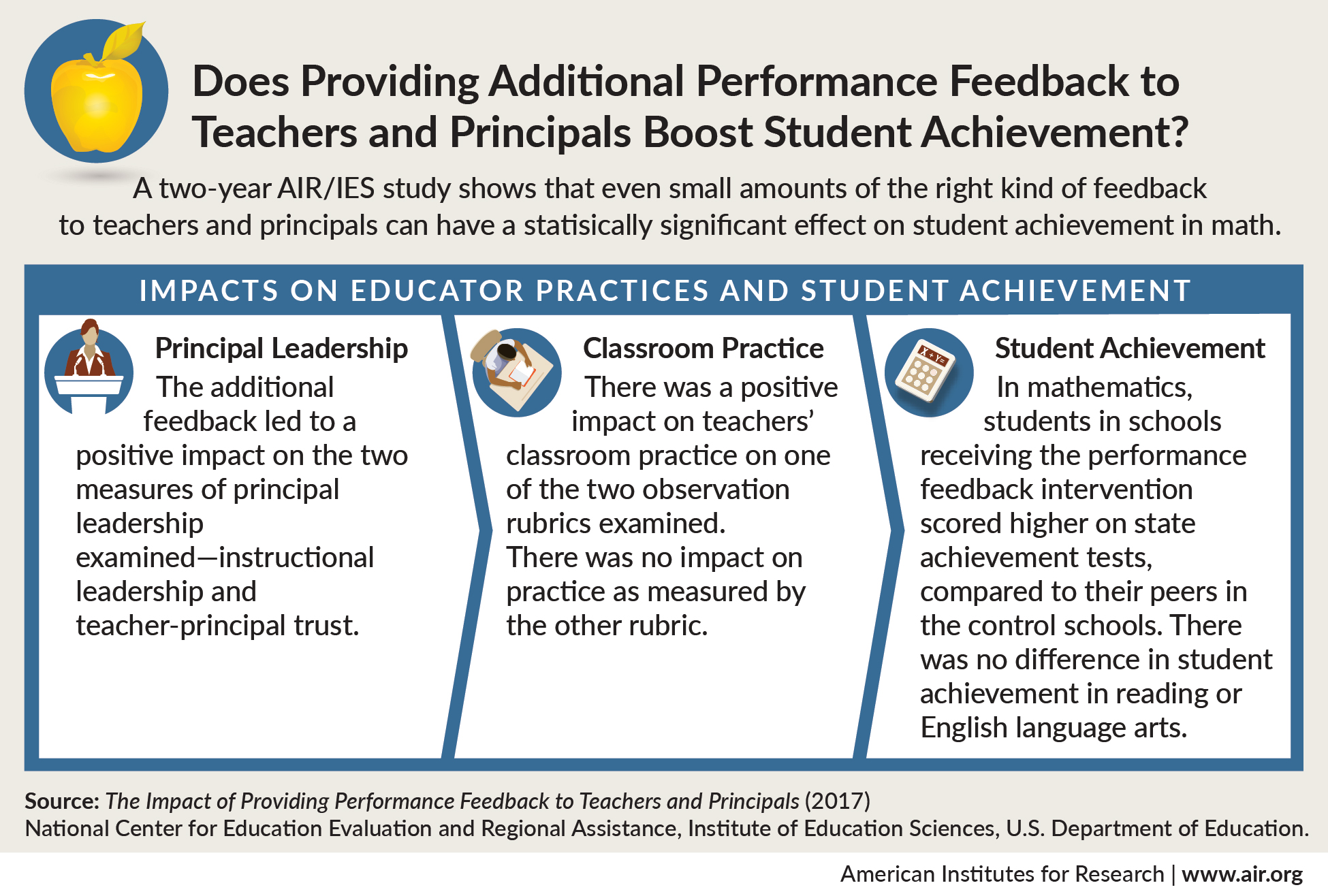The Impact of Providing Performance Feedback to Teachers and Principals
Educator performance evaluation systems are a potential tool for improving student achievement by increasing the effectiveness of the educator workforce. For example, recent research suggests that giving more frequent, specific feedback on classroom practice may lead to improvements in teacher performance and student achievement.
This report is based on a study on the implementation of teacher and principal performance measures highlighted by recent research, as well as the impact of providing feedback based on these measures. As part of the study, eight districts were provided resources and support to implement the following three performance measures in a selected sample of schools in 2012–13 and 2013–14:
- Classroom practice measure: A measure of teacher classroom practice with subsequent feedback sessions conducted four times per year based on a classroom observation rubric.
- Student growth measure: A measure of teacher contributions to student achievement growth (i.e., value-added scores) provided to teachers and their principals once per year.
- Principal leadership measure: A measure of principal leadership with subsequent feedback sessions conducted twice per year.
Key Findings
- The study’s measures were generally implemented as planned.
- The study’s measures provided some information to identify educators who needed support, but provided limited information to indicate the areas of practice educators most needed to improve.
- As intended, teachers and principals in treatment schools received more frequent feedback with ratings than teachers and principals in control schools.
- The intervention had some positive impacts on teachers’ classroom practice, principal leadership, and student achievement.

This is the second of two reports on the study, which was conducted by the U.S. Department of Education’s Institute of Education Sciences. The first focused on the first year of implementation, describing the characteristics of the educator performance measures and teachers’ and principals’ experiences with feedback. This report examines the impact of the two-year intervention, as well as implementation in both years.

